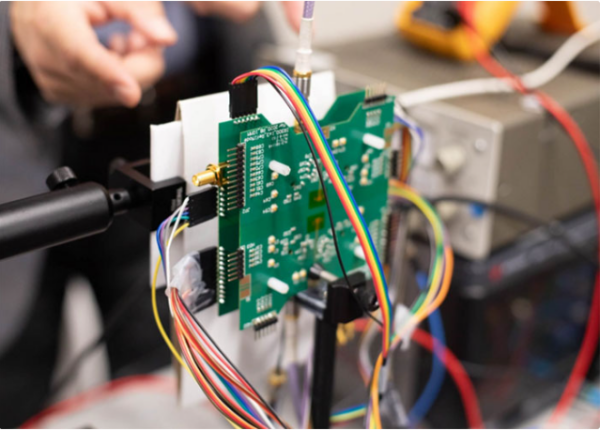Researchers developed an image sensor chip integrated into mobile devices, using high-frequency radio waves to “see” through objects.
To “see through” objects, the chip uses 3 image sensor units (pixel sensors) capable of transmitting and receiving mmWave waves. When the object responds to this wave, the components in the chip will amplify and process the wave so that the shape of the object appears on the screen. mmWave are frequencies with wavelengths in the range of 1-10mm, between microwaves and infrared rays, and are considered safe for health.

Close-up of the chip possessing “super powers” inspired by the character Superman (Photo: UT Dallas).
In tests, the chip was able to detect objects behind cardboard about 1 cm away. The research was published on January 5 in the journal of the Institute of Electrical and Electronics Engineers (IEEE), an international organization specializing in high technology.
After 15 years of painstaking research and improving sensor pixel performance (image sensor size), scientists have been able to miniaturize this type of chip for integration into mobile devices. In the future, phones with this chip integrated can “see through” the content of letters and parcels, finding the location of picture frames, electrical wires or broken water pipes hidden behind walls.
Wooyeol Choi, co-author of the paper and assistant professor of electrical engineering at Seoul National University, said: “The key point of the chip lies in its compact size. We completely eliminated the lens and optical components during the design process”. Each pixel creates an image through the reception of feedback signals. Besides, they are only 0.5 mm in size, equivalent to a grain of sand.
Not only stopping at the ability to see through, this breakthrough imaging technology promises to bring many applications in medicine and health care. Researchers compare this technology to airport security scanners, only they don’t use microwaves.
“However, to ensure safety, we use frequency signals from 200-400 GHz instead of X-rays, which can be harmful to health.” Besides, because the chip only works in a very close range, about 2.5 cm from the object to be scanned, thieves cannot. This technology can be used to “peep” at other people’s bags or backpacks.
Researchers are designing the next version of the chip, improving its ability to scan objects at greater distances – up to 12.7 cm, supporting the “detection” of small items.










